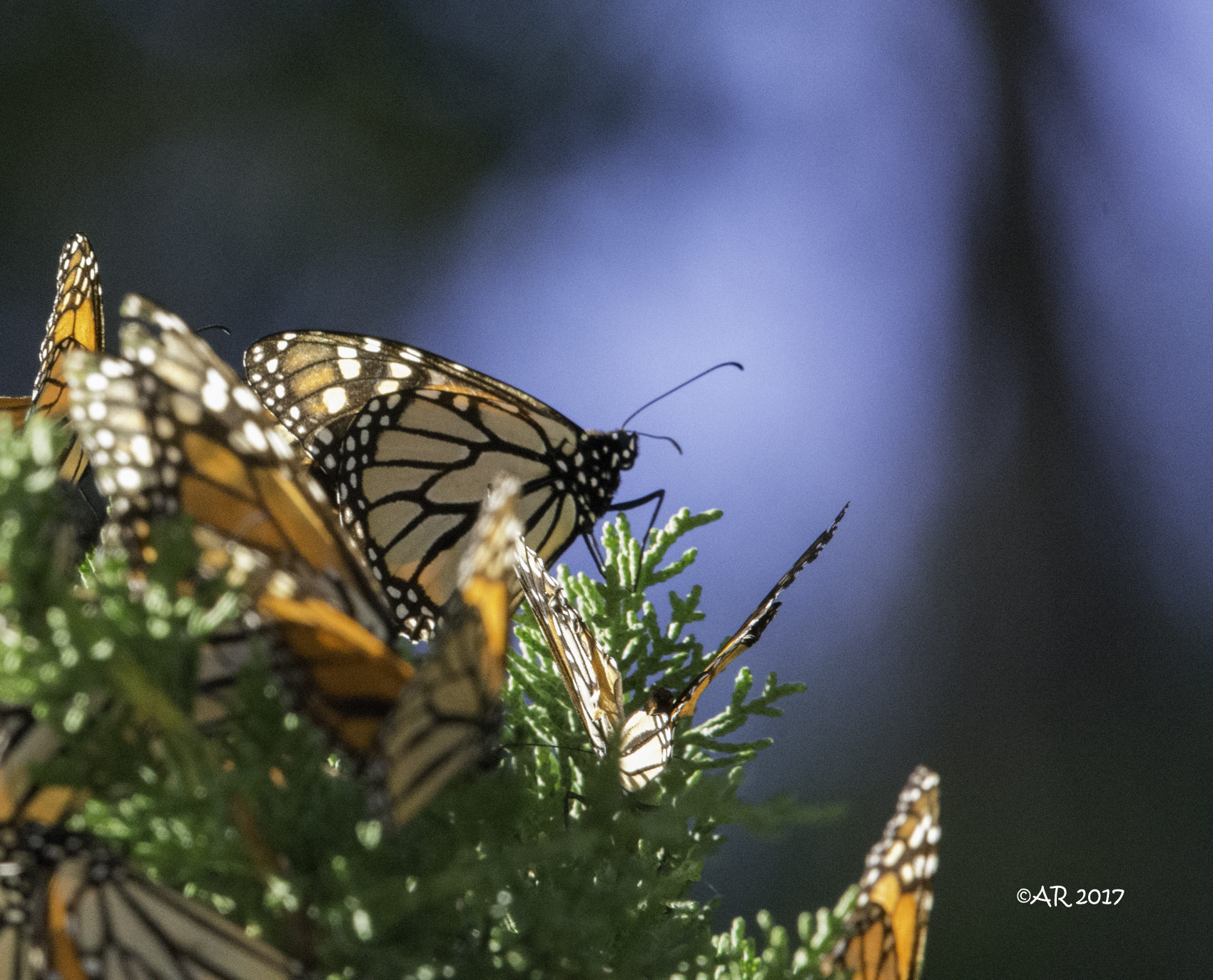by Daphné Laurier Montpetit
Mission Monarch coordinator
We see them go away – with some sadness – in fall. We know that they will be migrating for thousands of kilometers, and that their descendants will be back with the summer. But what’s going on between fall and spring? What do monarchs do during winter?
Heading South
Monarchs spend the winter in central Mexico mountains, in the states of Michoacán and Mexico. Year after year, they find shelter in the sacred fir forests. Mexico may evoke sun, heat and beaches, but the butterflies prefer a whole other environment!
Since monarchs can’t bear winter temperatures in the United States and Canada, they migrate south to avoid freezing. However, they are not looking for hot weather, but rather cool places.
The goal of the migration is to find the perfect climeate: warm enough to avoid freezing, but cold enough to allow the butterflies to survive until spring. Thus, the temperature in the overwintering areas varies between 1 and 6°C.
Put in on pause… for the diapause!
Under warmer temperatures, monarchs would keep their normal metabolic rate. For example, in summer, adult monarchs live for one month. Then how can they survive over seven winter months and still be able to reproduce in spring?
Monarchs of the migrating generation have a couple biological tricks to live that long. One of these ticks is the diapause, a period of time during which development stops. It’s a kind of dormancy, allowing the buttefly to spare its fat reserves, stretching its lifetime. The cool temperatures in the overwintering sites allow this important metabolic slowdown.
A fragile equilibrium
This perfect environment where monarchs spend the cold season is unfortunately very delicate, and several factors trouble its equilibrium. One of them is logging, inside or around overwintering areas, since it can result in a higher exposition to wind and, consequently, higher temperature fluctuations.
Climate change also worries researchers. Warmer temperatures could affect diapause as well as disrupt the internal compass which the monarchs need for migrating. Storm frequency is espected to increase with climate change, which greatly disturb the diapause, as it did in spring of 2016, when millions of monarchs were killed during a snow storm.
Despite the challenges, the butterflies are back once again at the sites visited by their ancestors, ready for another winter. The Mission monarch team is already looking forward to see them back. Are you?
More articles
- How do monarchs find their way?
- The monarch and the painted lady: do you know how to differentiate them?
- A breath taking Blitz




2 comments